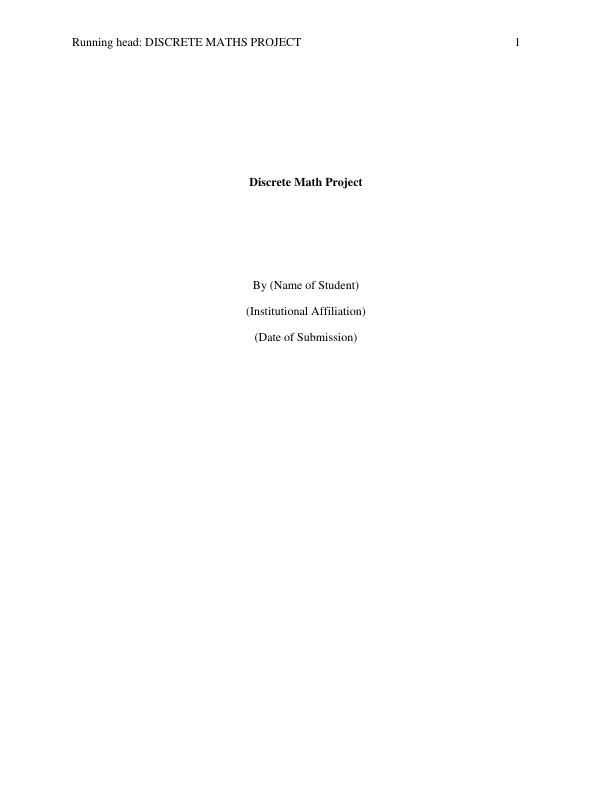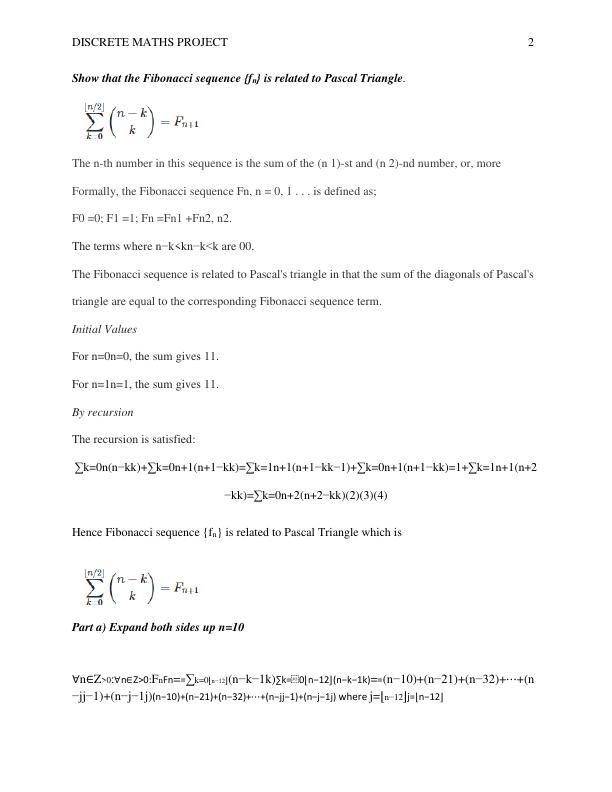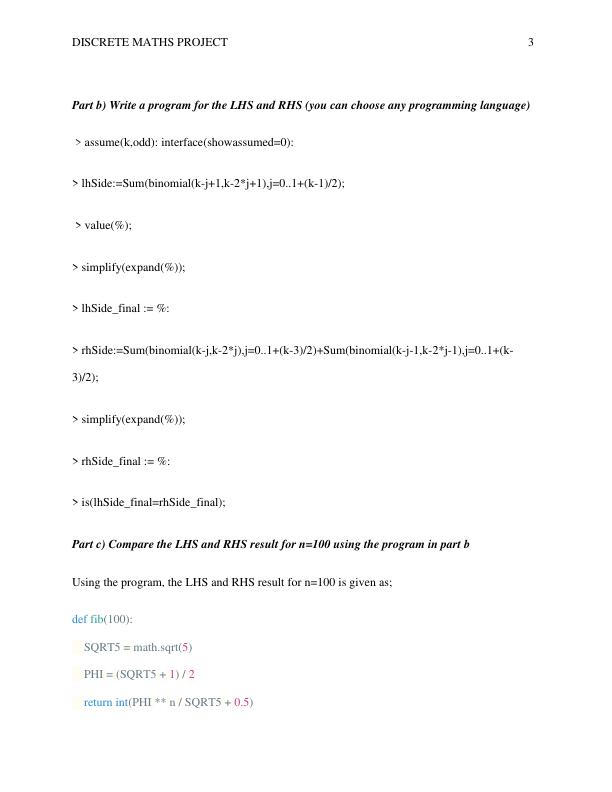Discrete Math Project
Prove the relationship between the Fibonacci sequence and Pascal's Triangle, expand both sides up to n=10, write a program to calculate the left-hand side (LHS) and right-hand side (RHS), compare the results for n=100, and prove the identity (Fn + 1) / Fn = Golden ratio.
7 Pages677 Words490 Views
Added on 2023-03-31
About This Document
This project explores the relationship between the Fibonacci sequence and Pascal's Triangle. It demonstrates that the Fibonacci sequence is related to Pascal's Triangle by showing that the sum of the diagonals of Pascal's Triangle are equal to the corresponding Fibonacci sequence term.
Discrete Math Project
Prove the relationship between the Fibonacci sequence and Pascal's Triangle, expand both sides up to n=10, write a program to calculate the left-hand side (LHS) and right-hand side (RHS), compare the results for n=100, and prove the identity (Fn + 1) / Fn = Golden ratio.
Added on 2023-03-31
ShareRelated Documents
End of preview
Want to access all the pages? Upload your documents or become a member.



